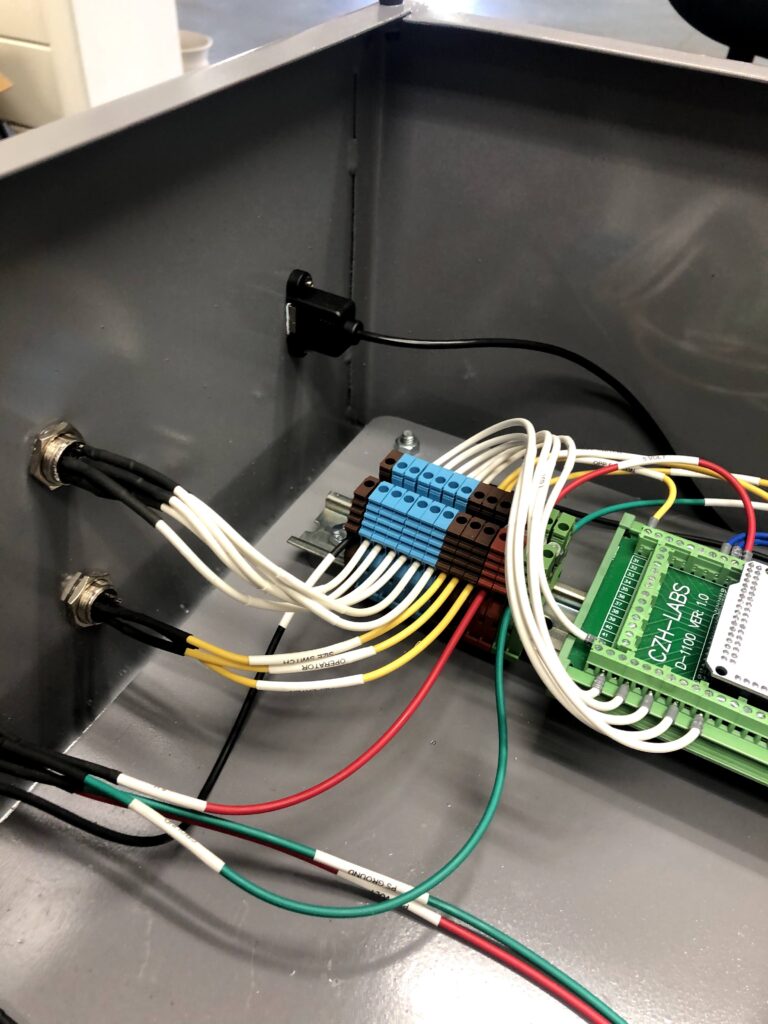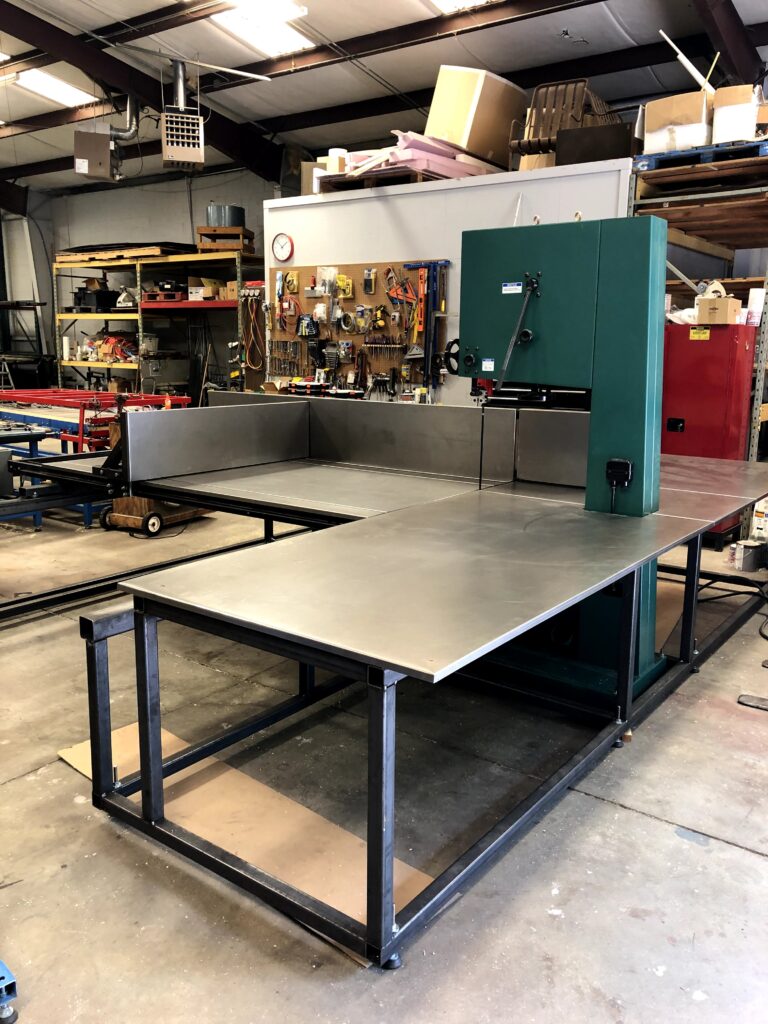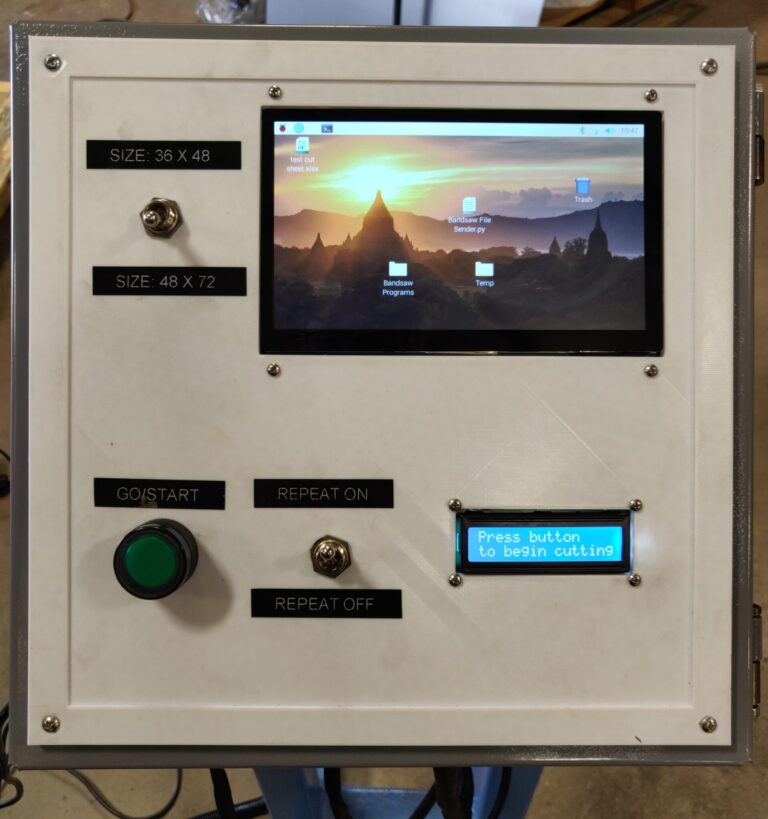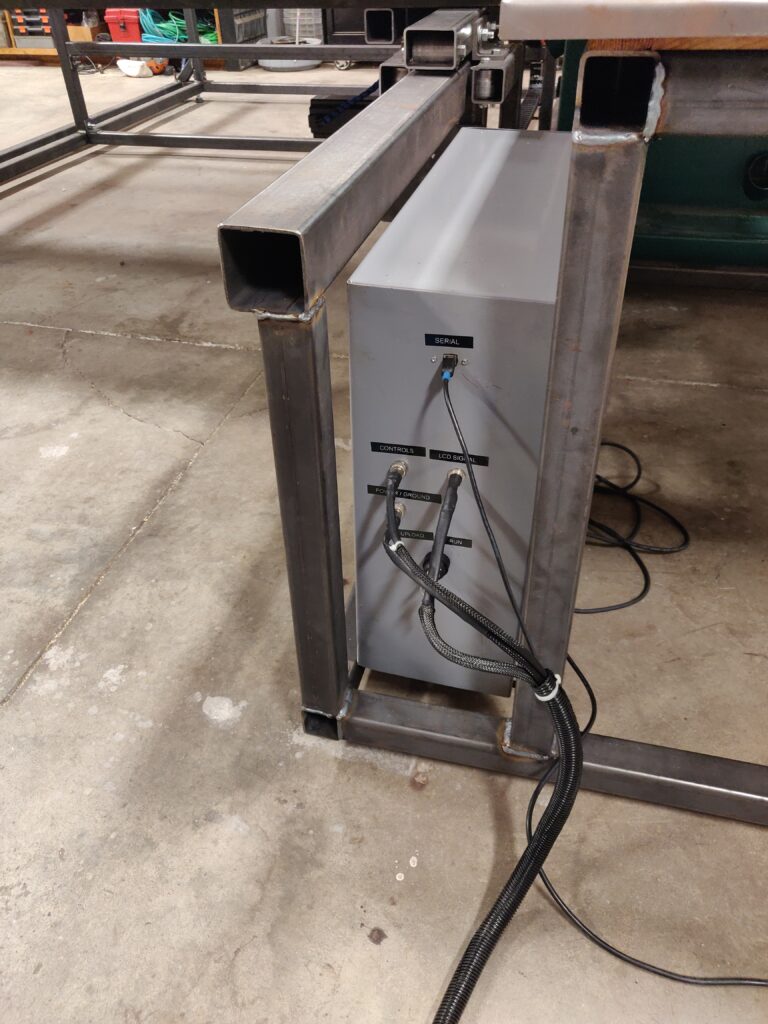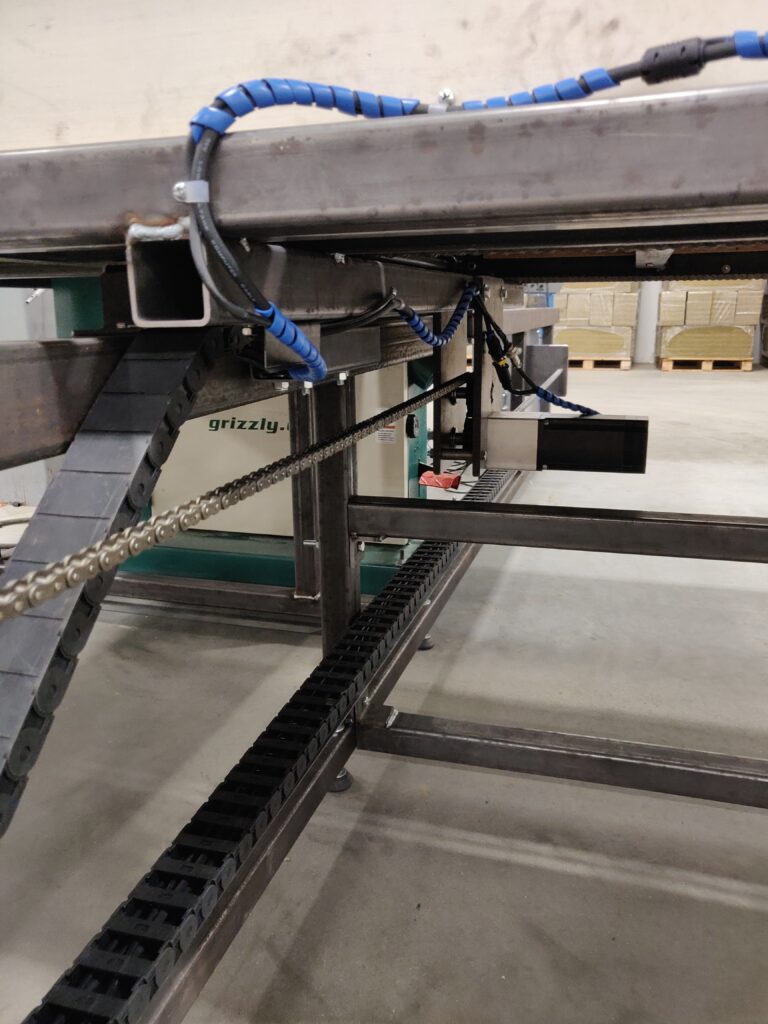Background: I completed my first mechanical engineering internship with R.N.C Industries, the leading packaging insulation company in the United States. I interned with them for the summer of 2021 where I, another intern, and a machinist were tasked with building a CNC Bandsaw capable of cutting 80+ pound bundles of insulation at the press of a button. The purpose of this machine was to cut down time and physical exertion significantly since prior to this all material was measured and cut by hand. The specifications by the CEO were as follows:
- No measurements were to be made by the operator, instead a “cut file” would be provided on a USB drive to be plugged into the machine
- All cuts are to be within 1/8” of the target measurement
- The operator must never lift or carry the entire bundle of material
- The bandsaw within the machine must remain accessible for maintenance
- The machine must run strictly using open source electronics (Arduino and Raspberry Pi)
Above is video of me running the machine as a demo to the CEO. He was quite happy with the performance and the overall accuracy of the cuts. As a note the machine generally was not used to cut large panels as shown in the video, but smaller pieces at they are the most labor intensive in large quantities. If you’d like to learn more about the build process there are additional details below.
My apologies for the unprofessional video. Due to a mishap with my personal copies of CAD files this is the best representation I have of the machine. Nonetheless, the entirety of the machine was modeled in SolidWorks prior to any fabrication. The final assembly consisted of over 300+ parts, with a vast majority to be made in-house at the R.N.C machine shop.
This is the prototype of what would later become our electrical system. It was our goal to receive and process cut file information using a Raspberry Pi 4, transmit that data to a microcontroller (Arduino), and them perform all the necessary movements for the desired cuts. This involved writing a python script to be executed on the Raspberry Pi to transmit data over serial communication, as well as a general operation program for the Arduino in C++.

After almost 2 weeks of fabrication and assembly, the frame of the machine was finally done. In this state we could test some of the basic movement as well as begin planning the layout of the electrical system.
This is the primary electrical panel that was built for the machine. It houses the Arduino, stepper motor controllers, as well the power supplies. We placed a great emphasis on ease of repair in the case of a future failure by labeling and color coordinating every single wire used in the system. In addition, there are no specialty cables or connectors used throughout the layout as we wanted everything to be repairable with off-the-shelf parts.


In order to house the raspberry pi as well at the other controls for the machine interface, a stand-alone control panel was built. The intention was that it could be moved to any position within a 7 foot radius of the operator’s location such that it was never in the way. The same color coordinated system is used as the electrical panel for the sake of wiring consistency.
Though not shown in the picture, there is a USB port on the side of the control panel extended to the raspberry pi. The interface on the top right is actually a touch screen, on which the operator can select the cut file to be transmitted to the Arduino. After that the LCD screen at the bottom right provides instructions for operating the machine. Since employees do the same set of cuts for hours, a repeater switch was added for ease of use.
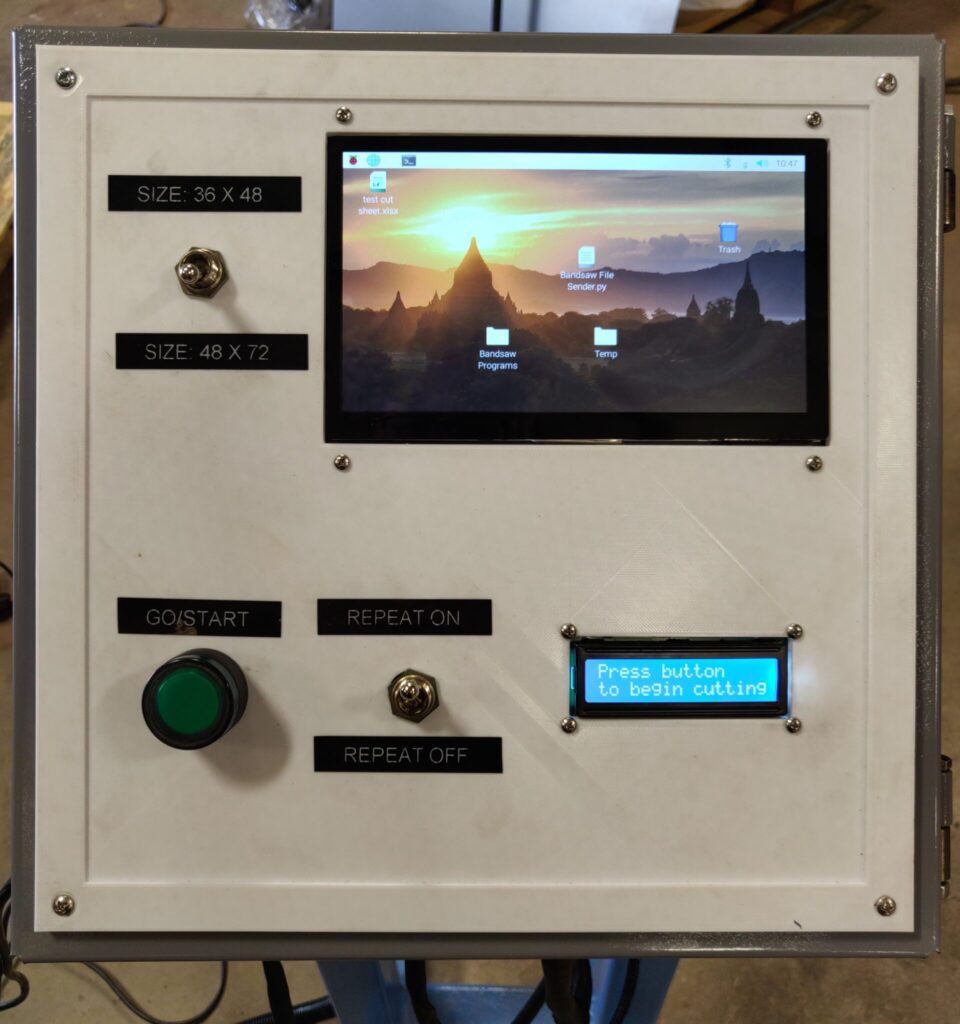

Once the electrical system was in place and we were able to properly run the machine, it turned out to be a success. The machine itself required just a fraction of the physical labor to cut the insulation while also exceeding the previous production rate. The machine was officially implemented in the latter half of July 2021 and has been in operation since.

